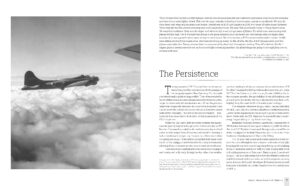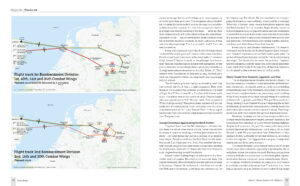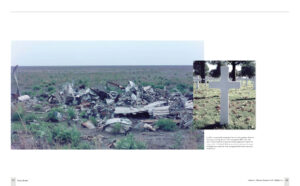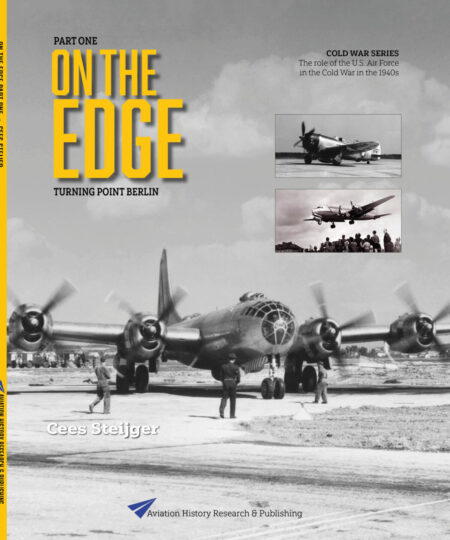Description
ISBN 9789083466910 | 156 pages | Hardcover | colour/bw | Maps | Index | Reading ribbon | 210 x 260 mm | 950 grams

The Crucial Role of Allied Air Power: The Path to Overlord
In January 1943, President Roosevelt and Prime Minister Churchill convened in Casablanca to discuss the liberation of Europe and the next strategic steps. The conference led to the establishment of the Combined Bomber Offensive (CBO) and the planning of the invasion of German-occupied Western Europe, later named Operation Overlord. Achieving air superiority was deemed essential for the success of the Normandy invasion. The relentless expansion of the Luftwaffe was a significant concern, necessitating its neutralization. From June 1943 to April 1944, under the codename Pointblank, the Allied strategic focus shifted towards obliterating the German aircraft industry, particularly the factories producing the formidable single-engine fighters, Messerschmitt Bf 109 and Focke-Wulf Fw 190 Würger.

The American Air Force embarked on this mission with strategic daylight bombings, while the British Bomber Command conducted night-time raids. However, throughout 1943, it became clear that the Luftwaffe’s strength was underestimated. The American forces suffered significant losses against the German fighters, and the British night-time offensive faced challenges with precision bombing. With the impending invasion, a concentrated and decisive blow against the Luftwaffe was deemed necessary before March 1, 1944. From February 20 to 25, 1944, under the codename Argument, the Allied air forces engaged in a critical air battle across Western Europe, from the IJsselmeer to the Danube, known in history as Big Week.
Big Week: The Battle for Air Supremacy
On February 21, 1944, the second day of Big Week, the Boeing B-17G SH 42-30280 Chief Crazy Horse participated in the bombings. Returning from a mission over Diepholz, the aircraft crashed into the IJsselmeer. This Flying Fortress was a radar-equipped aircraft, highly advanced for its time, part of the 812th Bombardment Squadron of the 482nd Bombardment Group, a special Pathfinder group operating from RAF Alconbury in Cambridgeshire.

Of the thirteen crew members, twelve managed to parachute to safety, landing between Nunspeet and Ermelo on the Veluwe. While nine were captured and sent to POW camps in Germany, four evaded capture with the help of the Veluwe resistance. They were sheltered in Ermelo and later transported by train to South Limburg, aiming to escape via Belgium. Tragically, one crew member, Ralph William Holcombe from North Carolina, perished in the crash. At 26, he drowned in the cold waters of the IJsselmeer. His body was found by a fisherman from Bunschoten on April 28, 1944, and brought ashore. Ralph W. Holcombe is honored on the monument at the general cemetery in Zeewolde and at the aviator monument near the crash site close to De Verbeelding in Zeewolde.

Discover the Epic Journey of the B-17 Crazy Horse and the Evolution of the American Air Force
This book delves into more than just the fate of the B-17 Crazy Horse. It vividly recounts the monumental developments of the American Air Force in Europe during World War II. Author Cees Steijger meticulously chronicles the events and weaves a coherent narrative, taking readers back to the pivotal moment on December 7, 1941, when the United States was violently thrust into World War II by a brutal Japanese attack on their naval base at Pearl Harbor.

While America had not been idle before this, the declaration of war against Japan and Germany set a rapid and unstoppable course of action. The United States’ organizational and logistical prowess, combined with its industrial resilience and ingenuity, transformed it into a global powerhouse capable of remarkable achievements once mobilized. The book celebrates the extraordinary dedication of individual Americans during the war years, highlighting the incredible feats of the predominantly volunteer military personnel and the sacrifices they were willing to make.






Reviews
There are no reviews yet.